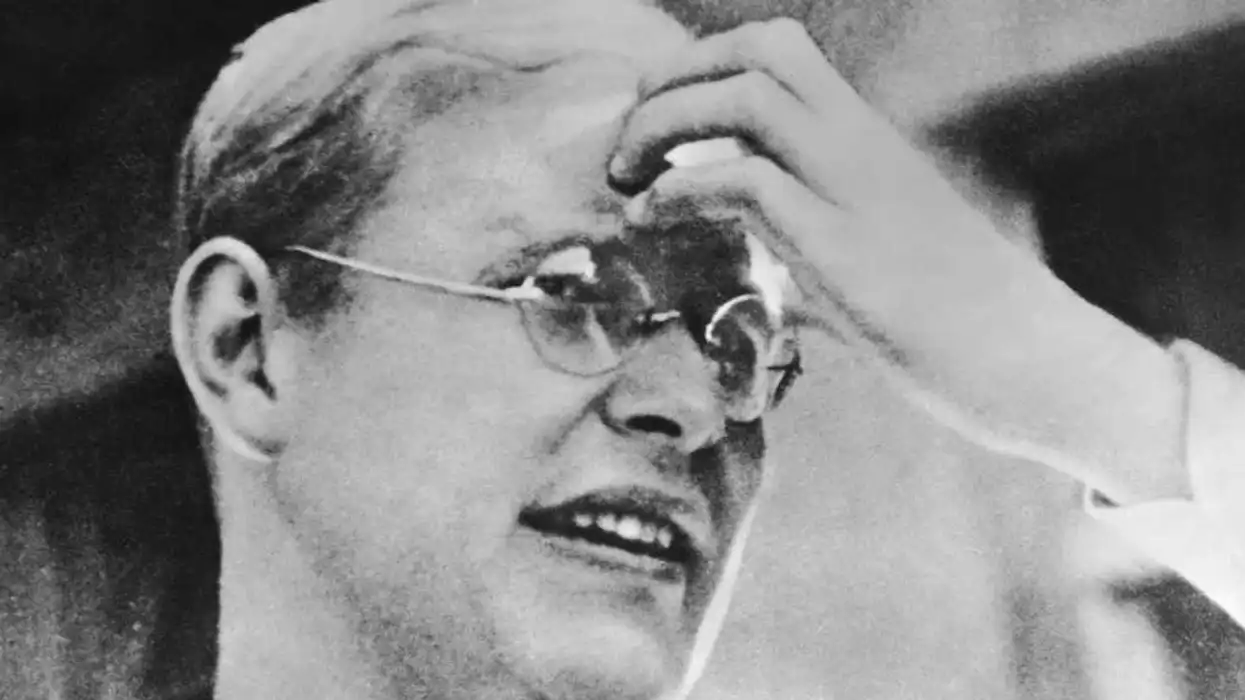
© 2026 Blaze Media LLC. All rights reserved.
Prepare to Be Amazed: This Interactive YouTube Video Will Read Your Mind
November 16, 2012
"How predictable are you?"
Do you consider yourself spontaneous, someone who is unpredictable and goes against the grain of what the majority of people are doing? Well, prepare to have your mind blown as a psychologist shows you just how predictable you are.
For his recent video on the YouTube channel Quirkology, Richard Wiseman asks "How predictable are you?" and provides test to check. The test is interactive and involves you putting your finger on your computer screen above slips of paper he has made and following his instructions perfectly.
Before we go any further in explanation, take the test:
So, you ended up on the smiley face too, right?
 (Image: Youtube screenshot)
(Image: Youtube screenshot)
There are a few potential explanations for this: 1) It shows that Wiseman is a mind reader; 2) he psychologically influenced you by briefly flashing a smiley face in the video; or 3) he's illustrating a similar mathematical problem to the Seven Bridges of Konigsberg, which many commenters pointed toward.
Assuming that Wiseman is not a mind reader, let's discuss the other two options. Did you see the flash of a smiley face in the video? Skip back to 1:00. Right at 1:03 there is a flicker of a face. But would this lead everyone to take the subliminal hint and end up on the last card that he predicts?
This brings us to the Seven Bridges of Konigsberg. If you've never heard of it, it's a mathematical problem that originated using real bridges in Konigsberg, Germany, according to MathForum.org, which discusses the topic introduced by Swiss mathematician Leonhard Euler in 1735:
In Konigsberg, Germany, a river ran through the city such that in its center was an island, and after passing the island, the river broke into two parts. Seven bridges were built so that the people of the city could get from one part to another. A crude map of the center of Konigsberg might look like this:
(Image: MathForum.org)
The people wondered whether or not one could walk around the city in a way that would involve crossing each bridge exactly once.
Euler's solution to this would ultimately lead to graph theory. To solve the problem, Euler identified the land on either side of the brides with a dot and connected the dots with arcs.
 (Image: MathForum.org)
(Image: MathForum.org)
If you were to try and trace your way over all the bridges only once without picking up your pencil, you'd find it's impossible. Euler found if a network of dots (vertices) have either none or two dots that have an odd number of lines connecting to it, then you would be able to trace over all in the network without picking up your pencil. In the case of the Seven Bridges of Konigsberg though, there were four dots with an odd number of lines going to them (each dot had three lines connecting to it).
One commenter of the YouTube video explains in simple terms what is going on:
It deals with even/odd occurrences of transfer across adjacent places, just like in this video.You'll notice that even if you remember the order in which he removed the papers, and try to get to those papers, you will never reach them, but instead end up on one of its adjacent sides.
Check out MathForum.org for a more detailed explanation here.
If you took a look at the comments on YouTube, some complain that they did not end up on the cards Wiseman predicted. This means they either didn't start on the appropriate card; they moved diagonally, which was against the rules; or they didn't move their finger the correct number of times as he was counting.
(H/T: Gawker)
Want to leave a tip?
We answer to you. Help keep our content free of advertisers and big tech censorship by leaving a tip today.
Want to join the conversation?
Already a subscriber?
more stories
Sign up for the Blaze newsletter
By signing up, you agree to our Privacy Policy and Terms of Use, and agree to receive content that may sometimes include advertisements. You may opt out at any time.
Related Content
© 2026 Blaze Media LLC. All rights reserved.
Get the stories that matter most delivered directly to your inbox.
By signing up, you agree to our Privacy Policy and Terms of Use, and agree to receive content that may sometimes include advertisements. You may opt out at any time.






